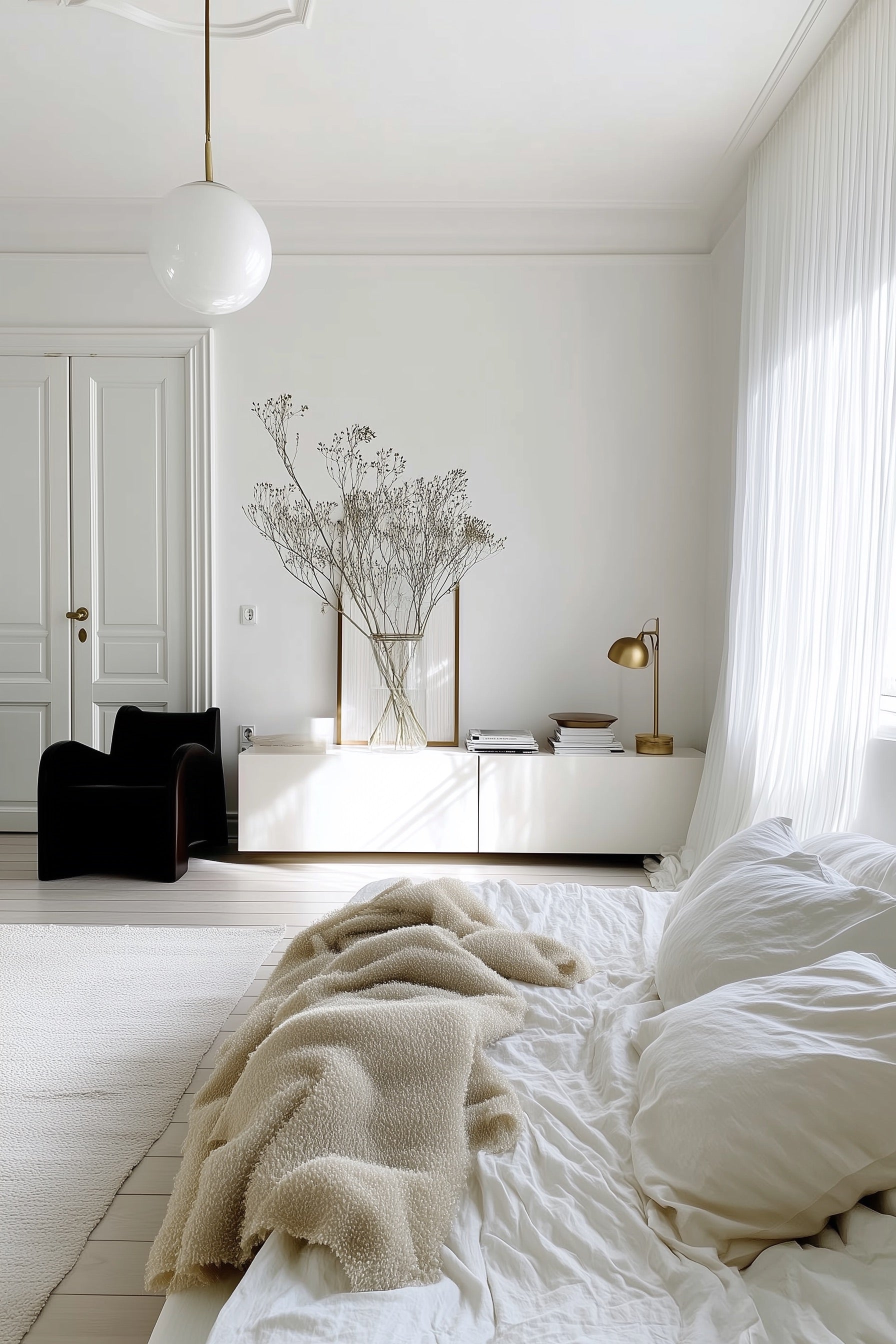Designing for Stillness: Bedrooms That Regulate and Restore
A quiet space. A softer rhythm. A bedroom that helps you exhale.
In a world that moves fast and asks much, your bedroom can become a sanctuary — not just for sleep, but for stillness. A place where your nervous system resets. Where your thoughts slow. Where your body begins to feel safe again.
This isn’t just about styling a beautiful space.
It’s about designing a room that works with your body’s natural rhythms to restore energy, regulate emotion, and support deep rest.
Let’s explore how to design a bedroom that feels like a soft landing — every single day.

✧ Why Bedrooms Matter for Nervous System Health
Your bedroom is more than where you sleep — it’s where your body learns to slow down.
Everything from lighting to texture to scent impacts your ability to:
-
Transition out of fight-or-flight mode
-
Support your circadian rhythm
-
Regulate your emotions after a full day
-
Sleep more deeply and wake more clearly
The goal isn’t perfection.
It’s presence — creating cues that help your body and mind feel safe to rest.
Related: Evening Anchors: Designing a Wind-Down Ritual for Rest and Emotional Reset
✧ 1. Light That Supports Stillness
Light is one of the most powerful tools in your bedroom — and one of the most overlooked.
Design Tips:
-
Use warm, dimmable lighting after sunset to cue melatonin production
-
Layer your lighting: bedside lamps, salt lamps, fairy lights or wall sconces
-
Avoid overheads and harsh blue light at night
-
If possible, allow natural light to filter in gently in the morning
Related: Mood Lighting for Autumn Nights: Set the Vibe Without Harsh Overhead Lights
✧ 2. Textures That Ground the Body
Your skin is your largest organ — and the textures you interact with daily affect how grounded you feel.
Design Tips:
-
Choose natural fibres for bedding — think linen, cotton, and wool
-
Use a weighted throw, boucle cushion, or soft robe to provide a sense of containment
-
Add softness underfoot with a rug or sheepskin beside the bed
-
Keep layers loose and lived-in — perfection isn’t the goal
Related: Layering for Calm: What to Add (and Where) for Maximum Cozy Impact
✧ 3. Scent as a Sleep Signal
Scent has a direct connection to the limbic system — the emotional part of your brain.
Used intentionally, it can become a cue that it’s safe to relax.
Design Tips:
-
Use lavender, sandalwood, chamomile or vetiver to create a calming association
-
Mist your pillow or sheets with linen spray
-
Use an essential oil roller or diffuser with a low, slow blend
-
Choose a scent and repeat it — the repetition strengthens the ritual
Related: Candle Rituals: How to Improve the Aroma, Glow, and Longevity of Your Candle
Related: The Power of Scent: Designing Atmosphere Room by Room
✧ 4. Emotional Anchors for Deep Rest
Bedrooms aren’t just practical — they’re emotional.
The things you surround yourself with before sleep can either activate or soothe you.
Design Tips:
-
Style your bedside with objects that reflect calm, care, and self-worth
-
Keep a journal, affirmation card, or photo where you can see it
-
Avoid screens or clutter in your direct line of sight from bed
-
Use repetition: a favourite mug, the same candle, a nightly ritual
Related: The Power of Repetition: Design That Supports Your Habits
Related: The Stories Our Spaces Tell: Designing with Emotion and Memory
✧ 5. Rhythm Over Routine
Stillness is supported not just by how your space looks, but how it works — when habits and rituals are naturally cued by design.
Try this:
-
Keep your evening supplements, eye mask or oils in a bedside drawer
-
Store a journal or book you actually return to (not one that feels like a task)
-
Set a soft light to switch on in the evening — a visual signal that the day is winding down
-
Curate a corner for slow moments: a reading nook, a tea tray, or simply an armchair and a throw
Related: Designing for Daily Rhythm: Anchoring the Start and End of Your Day
✧ Bonus: Kids’ Bedrooms That Regulate Too
Children need sensory support just as much — if not more. Gentle bedding, visual calm, and softness in their room helps with sleep, transitions, and self-regulation.

✧ Final Thought
A still space isn’t made by accident.
It’s created through care. Through softness. Through the quiet repetition of elements that say, you’re safe here.
When you design for stillness, you give yourself more than a place to sleep.
You give yourself space to land. To exhale. To begin again — rested, restored, and deeply held.



